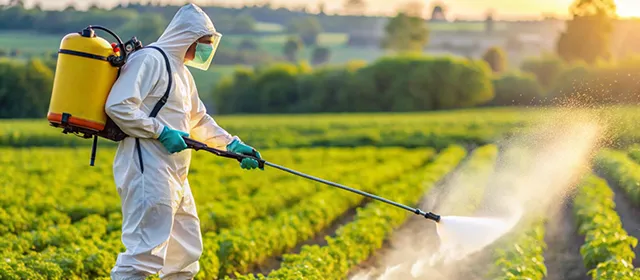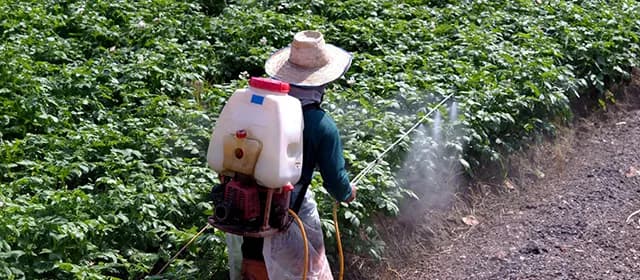Insecticides have long served as a foundation of pest control in agriculture, public health, and vector management. For businesses involved in crop protection, vector control, and regulatory compliance, insecticides represent both opportunity and risk. Their effectiveness can protect yields, public health, and food security, but misuse, resistance, environmental harm, or regulatory misalignment can erode margins, damage reputation, or even trigger bans.
The global insecticides market was valued at USD 15.86 billion in 2023, according to projections by Kings Research. In recent years, the insecticide landscape has been shaped by increasing demand for more sustainable solutions, growing concerns about resistance, and tightening regulations. Understanding the full scope of insecticides, from their types, sourcing, innovation, to regulation and sustainability, is vital for strategic decision-making in today’s markets.
How Big Is the Use of Insecticides, and What Are the Trends?
Globally, pesticide use (which includes insecticides) has been growing. According to FAO’s Pesticides Use and Trade database, total pesticides used in agriculture in 2022 reached 3.70 million tonnes of active ingredients, marking a 4 percent increase over 2021, a 13 percent increase over the past decade, and roughly double the use in 1990. Within that, the share of insecticides among pesticide types is significant: around 30 percent of pesticide volume is attributed to insecticides in many reports (Source: https://ficci.org.bd/). Agricultural insecticide consumption globally in 2022 stood at over 774,000 metric tons. Some countries stand out: Indonesia consumed about 171,000 metric tons, Brazil about 127,000 metric tons, making them among the largest users.
Another trend is resistance: in malaria vector control, for example, 87 percent of countries reporting data showed resistance to pyrethroids in at least one malaria‐vector species; organochlorine resistance was recorded in 82 percent of countries. These numbers show a rising challenge: more insecticide use, but also more resistance, implying that past strategies may lose effectiveness.
Which Innovations Are Shaping Insecticide Development and Use?
Innovation in insecticides is unfolding along several axes.
First, there is the drive for more selective or bio-based insecticides that reduce collateral harm to non-target species, such as beneficial insects or soil organisms.
Second, formulations and delivery mechanisms are being refined—for example, microencapsulation, slow-release formulations, spatial repellents, or combination treatments (synergists) to overcome resistance.
Third, the monitoring of resistance is being improved through global databases (such as WHO’s Global Database on Insecticide Resistance in Malaria Vectors), which help public health authorities and crop protection businesses anticipate where certain classes are becoming less effective.
Fourth, regulatory innovation is advancing—for example, the United States Environmental Protection Agency (EPA) has developed a new Insecticide Strategy aiming to better protect endangered species when registering or re-evaluating insecticides, balancing environmental concerns with agricultural needs.
For businesses, these innovations mean both opportunity (new products, premium positioning) and risk (legacy chemicals being phased out or losing effectiveness).
Why Is Insecticide Resistance a Key Risk for B2B Stakeholders?
Resistance is perhaps the single most pressing risk affecting insecticides’ future efficacy. As insects evolve mechanisms to survive exposure (for instance, metabolic detoxification, target site changes), once-effective chemicals become less useful, increasing costs and forcing shifts to newer, often more expensive, chemistries or to non-chemical controls. For example, the WHO reports that resistance to pyrethroids is now confirmed in a majority of malaria-endemic countries; in many cases, high-intensity resistance is present. Resistance affects public health tools (like insecticide-treated nets or indoor residual spraying), agricultural yields, and increases regulatory and operational complexity.
For B2B actors—manufacturers, suppliers, farmers, vector control programmes—resistance demands monitoring, stewardship, proper rotation of insecticides, integrated pest management, and investment in R&D to stay ahead. Failure to do so can lead to regulatory bans, lost market share, or higher input costs.
What Regulations Govern Insecticide Use, and How Are They Changing?
Regulatory frameworks for insecticides differ by country but broadly aim to ensure safety for humans, non-target organisms, and the environment. Requirements often include registration or licensing of active ingredients, assessment of toxicity (acute, chronic), environmental fate (e.g., how long a chemical persists, how it moves through soil, water, or air), and usage labeling.
In the U.S., the Federal Insecticide, Fungicide, and Rodenticide Act (FIFRA) under the EPA regulates the registration and periodic re-evaluation of public health pesticides.
Recently, the EPA released an Insecticide Strategy to improve protections for endangered species, integrating buffer zone adjustments, mitigation practices, and better evaluation of environmental impacts.
Internationally, treaties, WHO/FAO codes (such as the Code of Conduct on Pesticide Management), and regional laws (EU pesticide regulation, etc.) also influence which insecticides are acceptable. Changes are happening: older chemicals with known ecotoxicity or human health risks (e.g., certain organochlorines such as DDT) are under tighter control or banned; public health insecticide resistance is pushing regulators to approve new classes or require combination use, and environmental NGOs and consumers are pushing for safer, low-residue, or biological insecticides.
How Does Sustainability and Environmental Impact Shape Insecticide Strategy?
The environmental effects of insecticides extend beyond target pests. Non-target species (pollinators, soil fauna, aquatic insects) are often collateral victims. Persistence in soil or water bodies can lead to bioaccumulation and ecosystem disruptions. Managing these risks has become part of corporate strategy. Businesses are increasingly investing in insecticides that degrade faster, have lower toxicity to non-target organisms, or use biological control or natural substances.
Sustainable strategies also encompass monitoring usage to avoid overapplication, improving application precision (e.g., targeted sprays, drone application), and adhering to stewardship or Good Agricultural Practice (GAP) standards. Regulatory and consumer pressures increasingly demand both transparency regarding environmental impact and proof of sustainable credentials, making environmental considerations non-optional for market access and long-term competitiveness.
Which Challenges Are Businesses Facing in Insecticide Supply, Quality, and Management?
Several challenges confront B2B decision-makers.
First, the supply chain for active ingredients (chemical raw materials) can be volatile due to geopolitical disruptions, trade restrictions, or chemical precursor shortages.
Second, quality control is a concern: sub-standard or counterfeit products can lead to ineffective pest control and resistance development.
Third, regulatory uncertainty or divergent regulations across regions increase compliance costs: what is permissible in one region may be banned in another.
Fourth, environmental, health, and reputation risks increase if usage leads to negative externalities (e.g., pollinator decline, human health exposure).
Finally, monitoring and managing resistance is resource-intensive and requires collaboration with research institutions, governmental bodies, and local users – a challenge especially in less developed markets.
How Can B2B Leaders Leverage Trends, Mitigate Risks, and Capture Opportunities?
Leaders can adopt several strategies to maintain competitiveness while managing risk. First, investing in R&D for new active ingredients, biological alternatives, or synergists that can revitalize older insecticides or make lower doses effective.
Second, adopting integrated pest management (IPM) approaches that combine chemical and non-chemical controls to reduce reliance on any single insecticide class.
Third, building robust supply chains that track origin, quality, and ensure ethical sourcing and safety standards to avoid disruptions.
Fourth, engaging with regulatory bodies proactively, anticipating stricter standards, and ensuring compliance early, which can yield a first-mover advantage.
Fifth, leveraging sustainability and environmental safety as differentiators: using faster-degrading chemicals, certifying ecological safety, transparency in labeling, and adopting environmentally friendly application technology.
Such strategies can help companies anticipate resistance issues, reduce costs tied to overuse or regulatory penalties, and strengthen trust with consumers, governments, and buyers.
Final Thoughts
Insecticides will remain indispensable in agriculture and public health for the foreseeable future, but their role is shifting. Rising resistance, environmental concerns, regulatory tightening, and shifting consumer expectations are reshaping what is acceptable, effective, and profitable. For B2B stakeholders—manufacturers, distributors, farmers, public health agencies—the path forward lies in innovation, stewardship, and strategic alignment with regulatory, environmental, and social norms. Those who anticipate change and act proactively are likely to secure not just short-term gains, but a sustainable position in a market where responsible use of insecticides is increasingly a competitive necessity.




